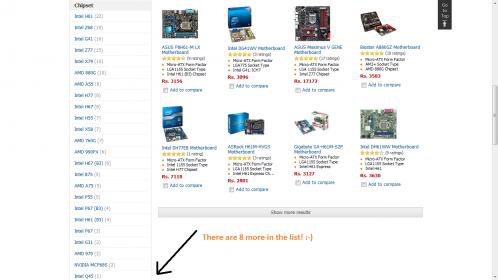setonfire
Disciple
Dear Mods,
I am planning on a basic gaming system. I have read through almost all suggestions/recommendations given in different posts in TE. I have especially been following posts made by ALHA17 and Jakob.
I am not an expert but I gather this much -
I was initially looking to build an APU-based system. However, it has been pointed out several times that Intel G620 coupled with a Radeon HD 6670 would beat the AMD A8-3870k APU.
So please help me complete my system -
Processor - Intel G620
Graphics Card - Sapphire Radeon HD 6670
Motherboard - Help me out here. I know ALPHA17's recommendation is the Intel DH67-BL but it costs Rs. 5500!
(I do not plan to use any fancy features like USB 3.0, Sata 6gb/s, overclocking, HDMI - Nothing)
All I want is a motherboard that -
1. enables the CPU and GPU to give their best performance and
2. can accommodate a better CPU and GPU maybe a year later
Please pardon my ignorance. I may have overlooked something very obvious. What can I say - I am a noob
I am planning on a basic gaming system. I have read through almost all suggestions/recommendations given in different posts in TE. I have especially been following posts made by ALHA17 and Jakob.
I am not an expert but I gather this much -
I was initially looking to build an APU-based system. However, it has been pointed out several times that Intel G620 coupled with a Radeon HD 6670 would beat the AMD A8-3870k APU.
So please help me complete my system -
Processor - Intel G620
Graphics Card - Sapphire Radeon HD 6670
Motherboard - Help me out here. I know ALPHA17's recommendation is the Intel DH67-BL but it costs Rs. 5500!
(I do not plan to use any fancy features like USB 3.0, Sata 6gb/s, overclocking, HDMI - Nothing)
All I want is a motherboard that -
1. enables the CPU and GPU to give their best performance and
2. can accommodate a better CPU and GPU maybe a year later
Please pardon my ignorance. I may have overlooked something very obvious. What can I say - I am a noob


